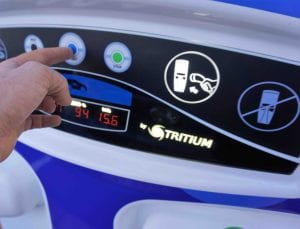The City of London has unveiled its Ultra Low Emission Zone in Central London, boasting the world’s toughest vehicle emissions standards intended to help the city reduce toxic air pollution and protect public health.
Vehicles entering Central London that do not meet the new emission standard (petrol vehicles that do not meet Euro 4 standards and diesel vehicles that do not meet Euro 6) will have to pay a daily charge – £12.50 a day for cars, vans, and motorbikes, and £100 a day for lorries, buses, and coaches.
While these are steep figures, London has already seen behavioural changes in the wake of the introduction of the City’s Toxicity Charge (T-charge) in November 2017 which was intended as a stepping stone for the announced Ultra Low Emission Zone (ULEZ).
Since its introduction, the T-charge has helped reduce vehicles entering Central London by around 11,000 per day. Further, there has been a 38% rise in the total number of compliant vehicles in the zone between February 2017 and March 2019, and an increase in the proportion of compliant vehicles in the Central London ULEZ zone from 39% in February 2017 to 61% in March 2019.
“This is a landmark day for our city,” said Mayor of London, Sadiq Khan, who pioneered the introduction of the ULEZ as part of a larger city-wide effort to tackle London’s toxic air quality levels.
“Our toxic air is an invisible killer responsible for one of the biggest national health emergencies of our generation. I simply refuse to be yet another politician who ignores it. The ULEZ is the centrepiece of our plans to clean up London’s air – the boldest plans of any city on the planet, and the eyes of the world are on us.
London’s toxic air health crisis has led to thousands of premature deaths each year, increased risk of asthma, cancer, and dementia, and has cost the city up to £3.7 billion every year, and £20 billion cost to the country every year.
Set to operate 24 hours a day, 7 days a week, 365 days a year, the new ULEZ has already led to a reduction of approximately 20% in NO2 concentrations measured at roadside monitoring sites.
“This is also about social justice – people in the most deprived parts of London, who are least likely to own a car, suffer the worst effects of harmful air pollution,” said Mayor Khan. “I will not stand by and watch children grow up with under-developed lungs in our city. The ULEZ is a vital step towards helping combat London’s illegal air.”
Researchers from King’s College London have found that, without the policy measures aimed at tackling the city’s air pollution, London’s air quality would not have come under compliance with legal limits for another 193 years.
As it is, the new measures will still take around six years to reach legal limits, through which time the number of schools exceeding the legal limit for NO2 exposure will fall from over 450 in 2016 to 5 in 2020 and zero in 2025. Currently, 400,000 children under the age of 18 are currently living in areas that exceed the legal limits for NO2 exposure, and two million Londoners in total.
“Air pollution can have major health implications on the developing child, with early exposure proven to increase the risk of asthma and lung infections, and these can be life-threatening,” Professor Jonathan Grigg of the Royal College of Paediatrics and Child Health (RCPCH).
“Approximately 50% of air pollution comes from road transport and 45% comes from diesel, so the introduction of London’s Ultra Low Emissions Zone on 8 April is extremely welcome. Coupled with this move, we need to see employers and schools encouraging and facilitating better use of public transport and active travel options like walking and cycling.
“London has some active travel networks which, if utilised, not only reduce air pollution but also improve family fitness which has many positive health benefits.”
Mayor Khan announced the Ultra Low Emission Zone back in November of 2017, a month after he had introduced his hard-hitting T-charge which imposed a £10 Emissions Surcharge per day on entering the inner city.
A month later the Mayor announced that he would seek to expand the ULEZ out to the North and South circular roads for all vehicles from the 25th of October 2021. The expansion could expand the number of Londoners affected by the ULEZ out to 100,000 cars a day, 35,000 vans a day, and 3,000 lorries a day.
The introduction of London’s ULEZ is also a milestone as it comes less than a year before the neighbouring City of Oxford introduces its own effort to tackle pollution, which was announced in October 2017. However, Oxford’s plan is to introduce a Zero Emissions Zone – a somewhat easier proposition for a city which is not the capital of one of the world’s largest economies.










